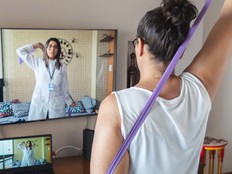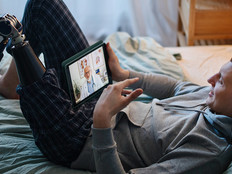Johns Hopkins Creates Adaptable VR for Medical Training
The Johns Hopkins School of Nursing has implemented VR training at all levels, from doctoral to prelicensure nursing, according to Kristen Brown, assistant professor at the Johns Hopkins School of Nursing and the simulation strategic projects lead at the Johns Hopkins Medicine Simulation Center. Areas of focus for training include resuscitation, anaphylactic reactions, postsurgical management, acute-care management and pediatric critical care.
Brown is working on a multiplayer VR study involving medical and nursing trainees with practice scenarios that accommodate up to 100 learners.
The VR setup at Johns Hopkins comprises an Oculus headset and an Alienware computer from Dell Technologies. Although the VR configuration includes hand haptics, cognitive decision-making is more critical to VR medical training, according to Brown. She wanted artificial intelligence functionality that could adapt to what students were learning.
“We make decisions based on what’s going on — time-critical decisions,” Brown says. “So one of the important components was that there was some sort of AI that’s really adapting to what we’re doing.”
READ MORE: Dr. José M. Barral discusses using virtual tools for anatomy education.
Orthopedic Students Practice VR Surgical Training at Mass General
Dr. Augustus D. Mazzocca, chief of the division of sports medicine at Massachusetts General Hospital, medical director at Mass General Brigham Sports Medicine and faculty member at Harvard Medical School, uses a system called PrecisionOS to augment orthopedic education. Mass General’s Department of Orthopedic Surgery also is beginning to use PrecisionOS to train medical students and residents in motor skills required for surgery.
The virtual reality headsets create a realistic environment for the student to practice. However, there is no real-time feedback since it’s an individual experience, says Mazzocca. One of the advantages of the PrecisionOS system is that the educator can connect the VR glasses to a laptop device, allowing the professor to see exactly what the trainee is seeing and doing. This gives insight and helps the educator do a better job of instructing.
“The beauty of virtual reality is now I can see what the learner is looking at for as long as they’re looking at it, and I think that really helps teaching,” Mazzocca says.
VR also lets students practice an exercise multiple times compared with work done in a cadaver or bio skills lab, where students can do exercises only once or twice, Mazzocca says. Now professors can let students know if they’re not looking at an X-ray long enough or adjusting their hands correctly, he says. Three-dimensional ability in surgery is important, and training to adjust a hand to place a pin or device in multiple planes is critical.
“With the ability to look and practice and see things in 3D, it’s really spectacular,” Mazzocca says.












